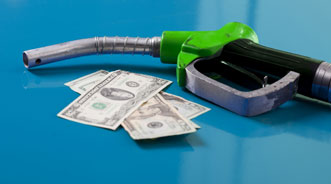Study: Consumers Plan to Pursue More Fuel-Friendly Rides

By subscribing, you agree to receive communications from Auto Remarketing and our partners in accordance with our Privacy Policy. We may share your information with select partners and sponsors who may contact you about their products and services. You may unsubscribe at any time.
YONKERS, N.Y. –
In the midst of a still-uncertain economy and gas prices fluctuating toward the higher end, though down slightly of late, a hefty majority of consumers are apparently planning to go more fuel-efficient with their next ride and aren’t letting much stand in their way, according to Consumer Reports.
The magazine found in its recent survey that consumers would make some wiggle room when it comes to purchase price, amenities and size to get stronger fuel efficiency; however, they’re not likely to budge when it comes to safety.
Specifically, Consumer Reports discovered that 62 percent of respondents plan on going after a vehicle that either has a fuel economy that is “much better or somewhat better” than their current ride.
About a third of the respondents (32 percent) said they will stay in a ride with comparable fuel economy.
“Just 5 percent say their next car will have worse fuel economy, likely driven by changing needs, such as a growing family (minivan) or launching a small business (pickup truck),” the publication shared.
Continuing on, the average expectation cited by respondents for their next ride’s fuel economy came in at 29 miles per gallon, with higher levels given by older respondents, women and drivers from lower-income households.
Subscribe to Auto Remarketing to stay informed and stay ahead.
By subscribing, you agree to receive communications from Auto Remarketing and our partners in accordance with our Privacy Policy. We may share your information with select partners and sponsors who may contact you about their products and services. You may unsubscribe at any time.
“These demographic groups favor small cars and sedans — car types that can deliver that desired mileage,” the publication said of the aforementioned groups. “More than 10 percent said they expect 40 mpg or better in their next car.”
So what are consumers willing to do to improve their fuel economy?
On new-car purchases, 58 percent said they’d be willing to shell out more money, with 44 percent saying they would give up amenities or comfort and 47 percent claiming they would be willing to scale back on size or capacity, Consumer Reports discovered.
About a quarter (27 percent) would buy a car of lower performance, and only 11 percent would make safety sacrifices.
For used-car purchases, about half (49 percent) would be willing to move up in price, with 54 percent saying they’d sacrifice amenities or comfort.
The proportion claiming they could cut down on size or capacity to get in a more fuel-friendly ride was at 48 percent, with 35 percent saying they would be willing to buy a ride with a lower performance.
Like it was for new cars, consumers weren’t so ready to give up safety features, as just 14 percent said they would make that sacrifice.
“To get significant fuel-economy gains, more than half of respondents are willing to pay extra for a more efficient vehicle, playing right into the strategy of several automakers who offer special edition models for a premium,” Consumer Reports stressed.
“Often the gains for such models are slight, just 1-2 mpg, and the return on that investment — even when just a few hundred dollars — may be much longer than consumers anticipate,” it added.
Continuing on, one interesting point the publication brought up is that the overwhelming majority of consumers won’t actually buy this year.
Less than a fifth will buy a vehicle, it found.
“Despite consumers craving relief from operating costs and owning older cars, just 17 percent plan to purchase a car in the coming year,” the report noted.
However, officials did find the probability that a driver from ages 18 to 34 will buy is three times stronger as it is for a shopper who is 55 or older.
Fifty-five percent of the actual buyers will make a used-car purchase, with the rest going new.
The segment projected to lead the used-car purchases is small cars (19 percent), followed by sedans (18 percent). For the new-car market, those rankings are flip-flopped, with sedans at 21 percent and small cars at 18 percent.
Wagons (1 percent for both new and used) were at the bottom of both lists.
“Compared against their current cars, shoppers are moving away from both new and used sedans, despite that many sedans provide a good balance of fuel economy and safety,” the publication stressed.
“The number of respondents who expect to buy a new or used sedan is 5 and 8 percentage points lower, respectively, than the number who currently own a sedan,” they continued. “Pickup truck interest is also down, but that is less surprising given economic conditions.”
In what Consumer Reports found to be the “car-type shift,” there has been a lot of movement to new, small and midsize vehicles. These units are said to be “versatile,” even if they are not the most cost-effective.
“There is only a 1 percentage point shift from large SUV ownership (6 percent) to purchase intent (5 percent), giving this expensive, gas-guzzling category surprising market resiliency. The best balance of dynamics, flexibility, and ownership costs is often a wagon, yet wagons rate at the absolute bottom for purchase intent,” the publication stressed.


